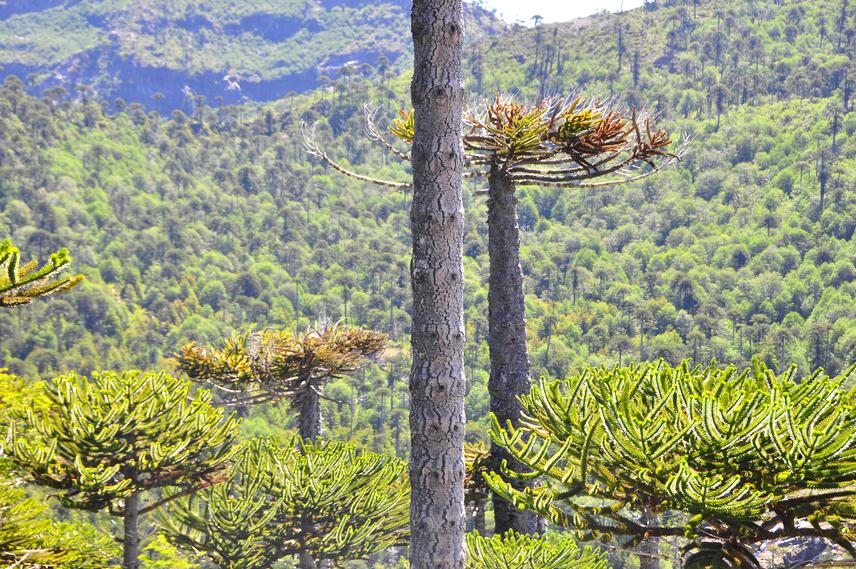Social media presentation from Paulina.
Paulina Fernanda Puchi Gonzalez
The decline of Araucaria araucana populations (branch dieback, discoloration of leaves, necrotic leaf symptoms, discoloration of internal stem tissues and finally tree death) is present in both adult and young individuals mainly in its northern distribution, where the sites are less fertile, and where warming and extreme droughts have occurred in the last decades.
Dendroanatomy can show the effects of climate on stem growth from yearly to centennial but even also at intra-annual resolution. Through this technique we will provide novel information about the effect of climate change on A. araucana and I’ll likely understand the processes that have been causing the decline in the last decades. The results will provide a powerful diagnostic tool to forecast possible forthcoming vegetation conditions, to disentangle endangered versus safe stands and will represent a unique approach to predict the future of the species and related conservation strategies.

Recent global warming and severe droughts have caused decline and forest mortality worldwide. In addition, climatic models predict that these extreme events will be more severe and frequent in the next decades. Nonetheless, tree physiological mechanisms under drought conditions and the key drivers inducing tree decline are still poorly understood.
Trees can suffer two mechanisms inducing drought decline and even death: carbon starvation or hydraulic failure. Both mechanisms are related to a reduction in water availability and then photosynthesis, which imply a decrease in carbon sequestration. Thus, xylem anatomical parameters offer a unique opportunity to evaluate how wood formation responds to severe drought within a long-term perspective. Dendroanatomy is a new approach where wood-anatomical traits are quantitatively measured to assess cell anatomical characteristics (e.g. lumen area, cell wall thickness, area of parenchyma rays) along series of dated tree rings.
Araucaria araucana is an endemic species of the temperate rainforest in Chile and Argentina, declared a natural monument in 1990 and classified as Endangered by the IUCN in 2013. In recent years mega-drought and warming have been inducing decline and mortality phenomena in many stands. These enduring extreme conditions are challenging the potential of these ecosystems to recover.
The aim of this research is to determine the effective drivers of tree decline by applying cutting edge techniques and analyzing wood-anatomical traits (tracheid size and cell wall thickness) in A. araucana trees across its natural distribution range.
Project Updates
6 May 2021
14 May 2021
Interview about the project Universidad Austral de Chile